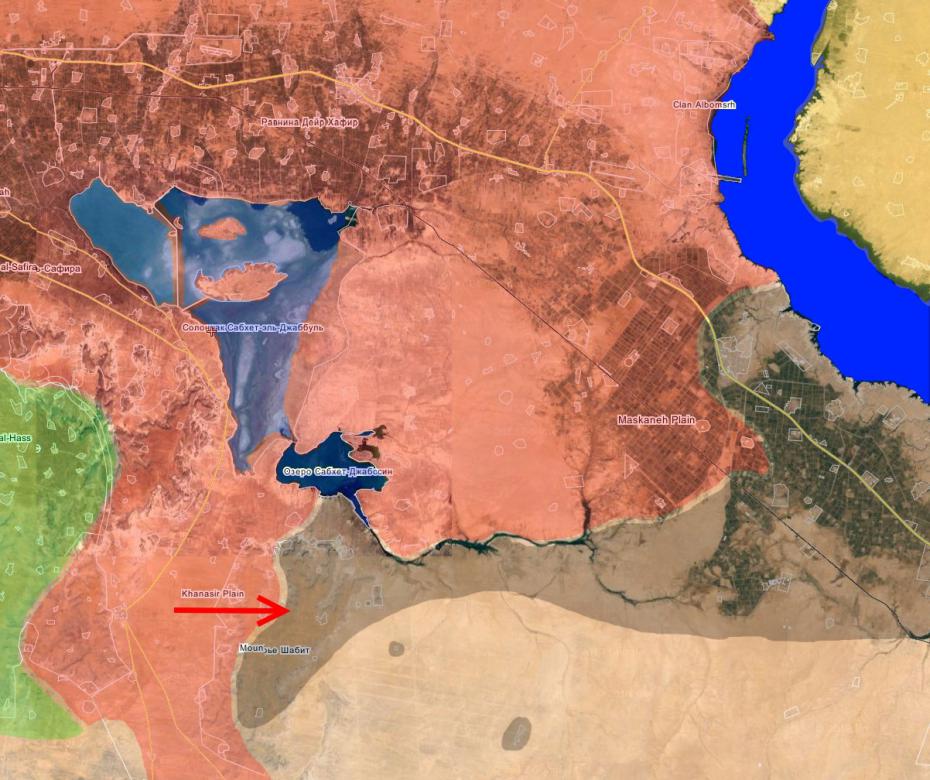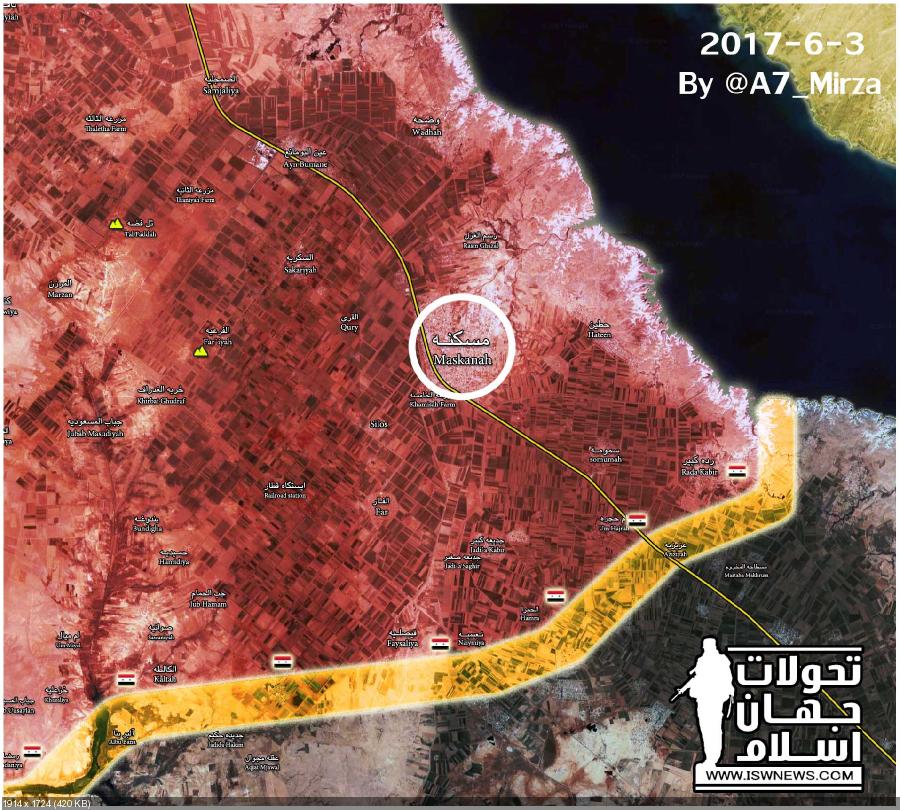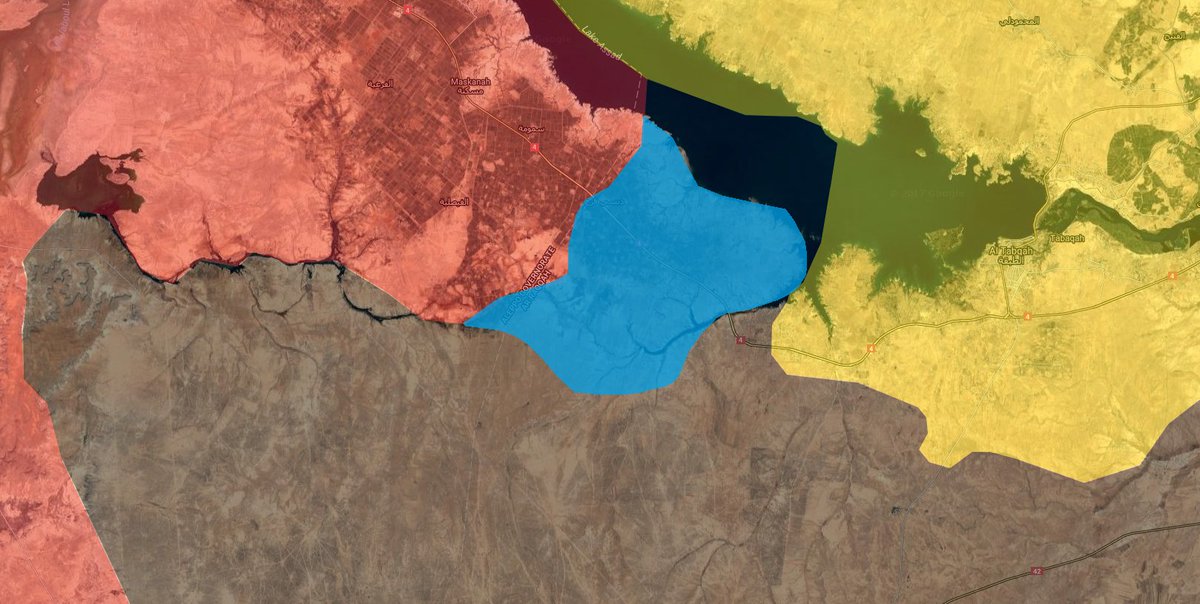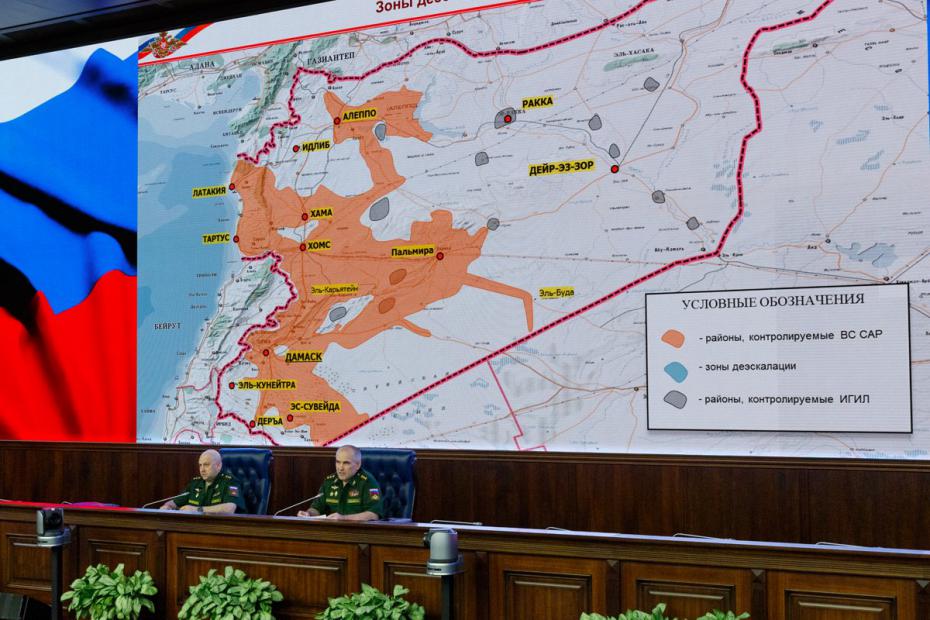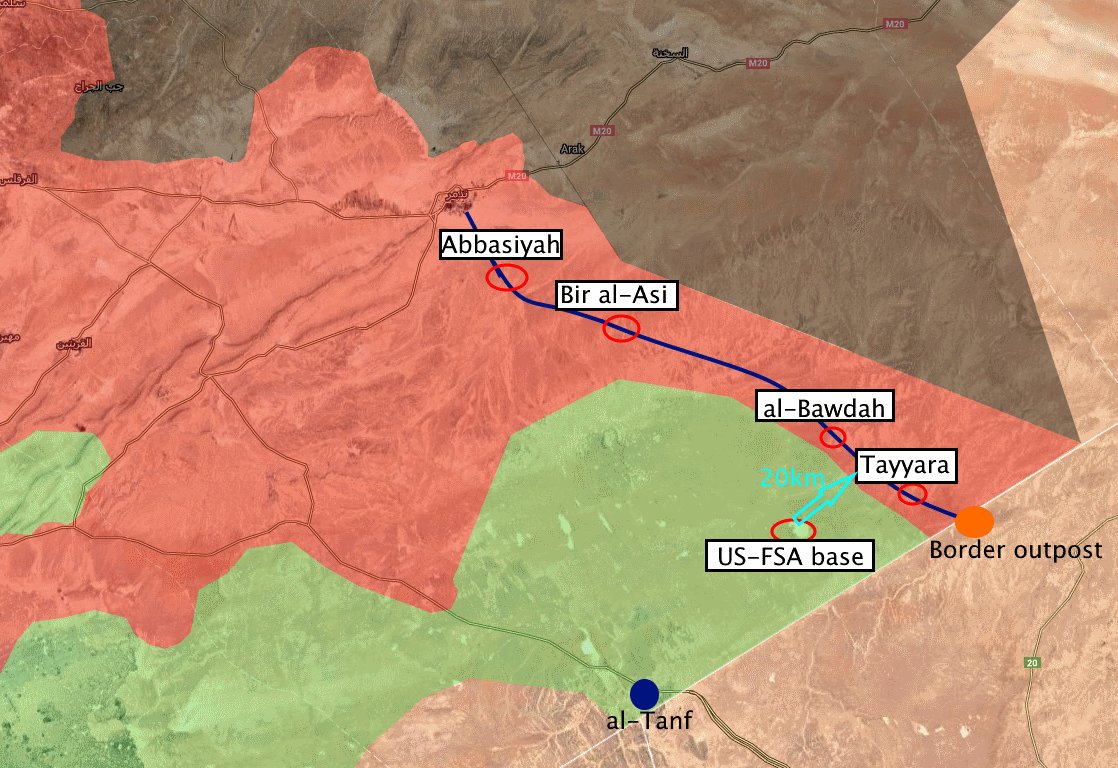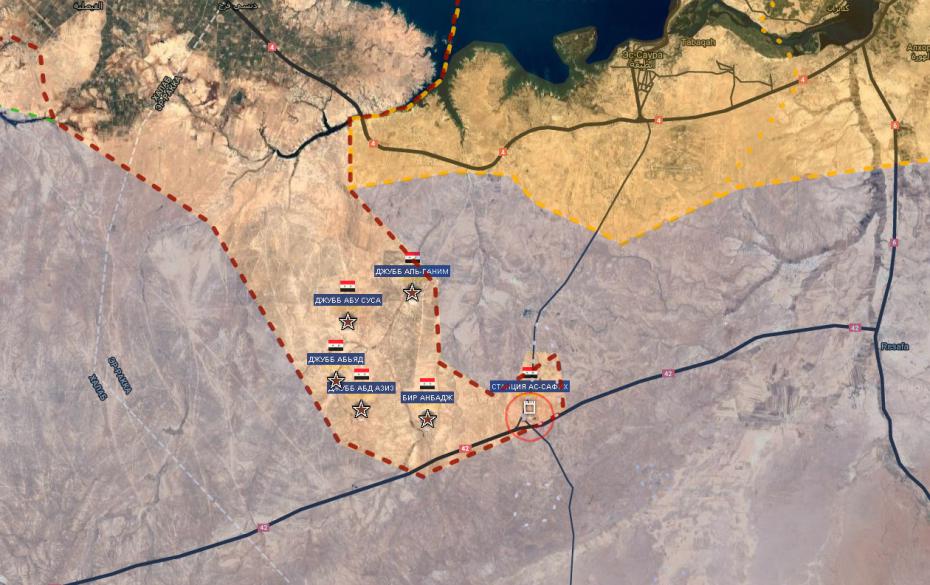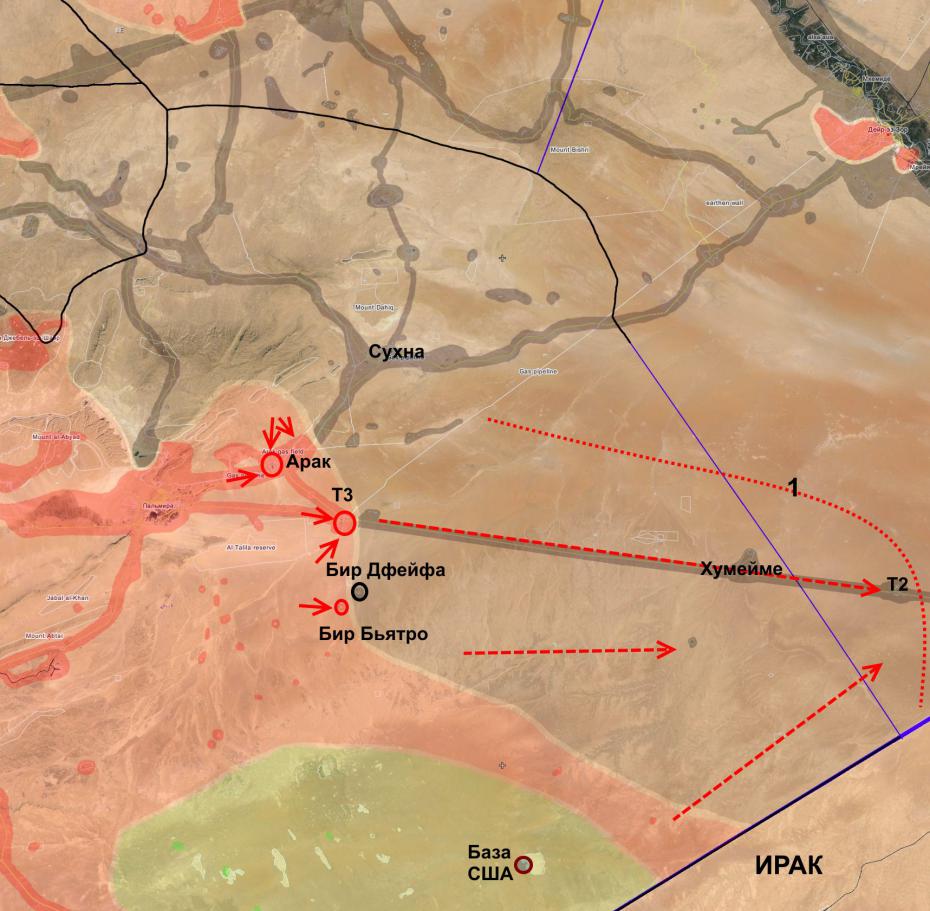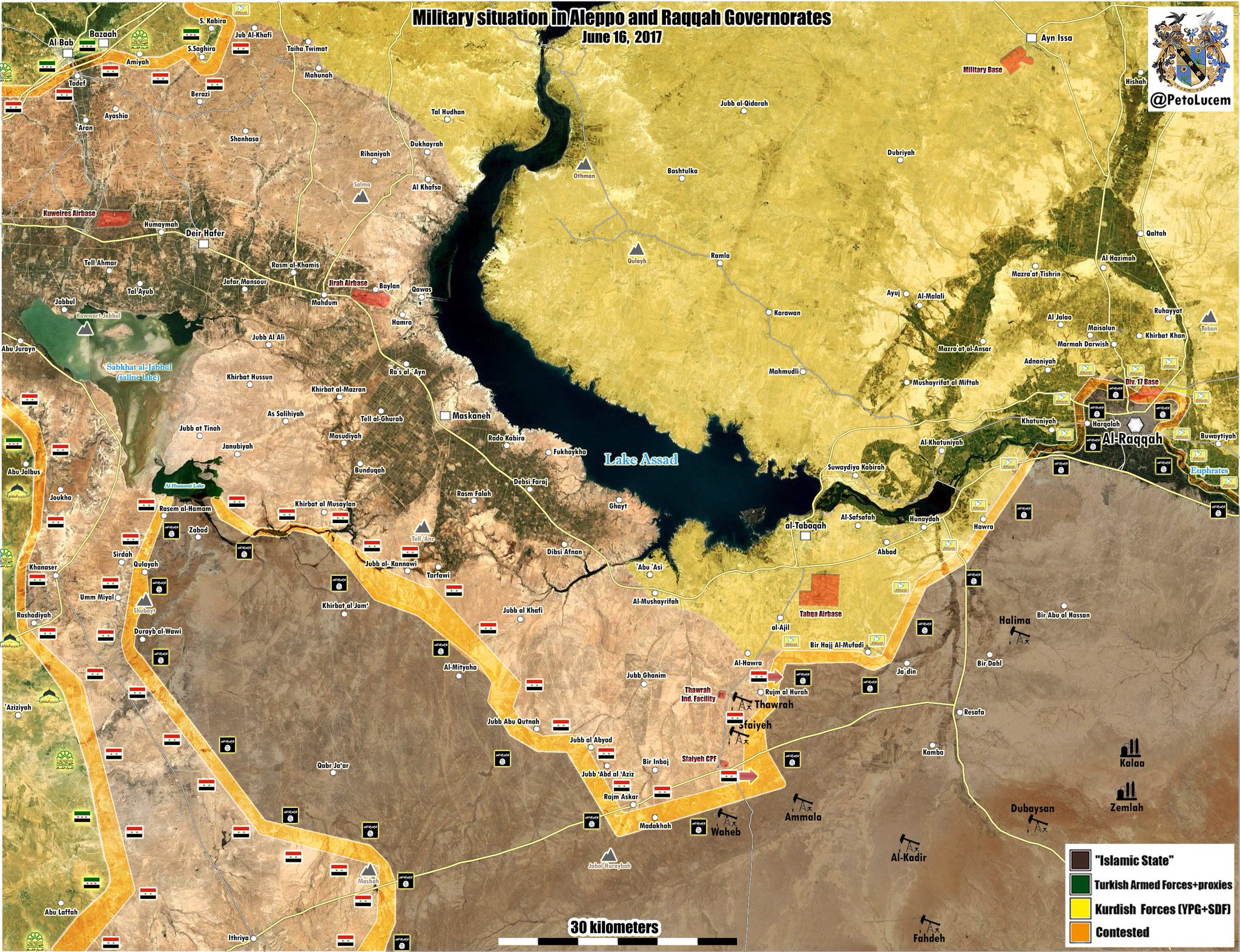Schmelzer
Valued Senior Member
The Syrian army has, as predicted, now cleared also the part North of Maskanah, all the greater villages North of Maskanah are now under Syrian control. They also continue to advance in the South of their front:

Not many other news. The Barzah suburb of Damascus is now under complete government control, the agreement about the transport of some rebels with families to Idlib is finished. Some advances in the South against the US-supported NSA, Daesh intensifies its attacks against Deir Ezzor, but is unable to reach any success.
PS: Islamic law has played not much role over a long time, the revival is quite new, and based on Saudi-Arabian and Qatar money, nothing else.
Iran has, in the past, supported some terrorism. Today this is almost irrelevant. Hisbollah is de facto part of the government and the main military power of the state Lebanon, which is not under Sharia law. It probably also supports the Houthis in Yemen against the Saudi aggression, and some Shia groups in Afghanistan. This is already all what one could construct as "terrorism" if one likes very much. The support in Syria is invited by the government, so in no way terrorism according to international law.

Not many other news. The Barzah suburb of Damascus is now under complete government control, the agreement about the transport of some rebels with families to Idlib is finished. Some advances in the South against the US-supported NSA, Daesh intensifies its attacks against Deir Ezzor, but is unable to reach any success.
PS: Islamic law has played not much role over a long time, the revival is quite new, and based on Saudi-Arabian and Qatar money, nothing else.
Iran has, in the past, supported some terrorism. Today this is almost irrelevant. Hisbollah is de facto part of the government and the main military power of the state Lebanon, which is not under Sharia law. It probably also supports the Houthis in Yemen against the Saudi aggression, and some Shia groups in Afghanistan. This is already all what one could construct as "terrorism" if one likes very much. The support in Syria is invited by the government, so in no way terrorism according to international law.


